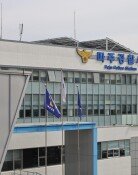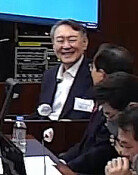[Editorial] To Stabilize and Utilize the Age of 1,000 in Stock Index Rates
[Editorial] To Stabilize and Utilize the Age of 1,000 in Stock Index Rates
Posted February. 28, 2005 22:47,
The composite stock index of the Korean stock market reached the 1,000-point mark yesterday. It is the fourth time the index has hit the four-digit mark since 1989, 1994, and 1999. The conditions of the stock market not only reflect heated business conditions, but also affect the economy as a whole. A note should also be made of domestic markets such as KOSDAQ, where the domestic aggregate value of listed stock amounted to 500 trillion won for the first time in Korean market history.
The current bull market is expected to provide such benefits to the economy as improving management conditions, providing liquidity, and boosting investment opportunities, reviewing the stability of financial institutions, and reviving the domestic economy through the increase of investment profits of domestic firms. But we should also take note of the fact that the previous three Ages of 1,000 in Stock Index Rates tapered off after a short while.
Policies aiming to activate venture industries and support the stock market through pension funds will not go far in stabilizing the current bull market trend. The only way to reduce fears of a bubble market would be to review the overall competitiveness of the market, improve corporate performance, and create steady investment opportunities. In order to do so, it is essential that government policies and a social atmosphere facilitative to corporate activities be cultivated.
Foreign holdings in Koreas stock market are inflated at a rate of up to 42 percent. Domestic institutional investors, on the other hand, barely reach 20 percent. This trend has caused the local business culture to shape up, but it has also resulted in insecurity at the management level and requests for excessive rates of dividends. The role of institutional investors in stabilizing the market is also limited. The volatile foreign market also cannot be considered separately from the weighty impact of foreign investors in the domestic market.
In that sense, government policies should focus in cultivating the environment for domestic institutions and individual investors. Reflecting the current active market conditions, structural alterations in the securities industry are also in due order.





![지하철 타고 가는 북한산성…외국인도 반한 ‘K등산 맛집’[전승훈 기자의 아트로드]](https://dimg.donga.com/c/138/175/90/1/wps/NEWS/IMAGE/2026/01/10/133120824.1.jpg)
![두쫀쿠가 뭐라고…영하 8도에 아이들 1시간 줄세운 어린이집 [e글e글]](https://dimg.donga.com/c/138/175/90/1/wps/NEWS/IMAGE/2026/01/09/133126969.3.jpg)
